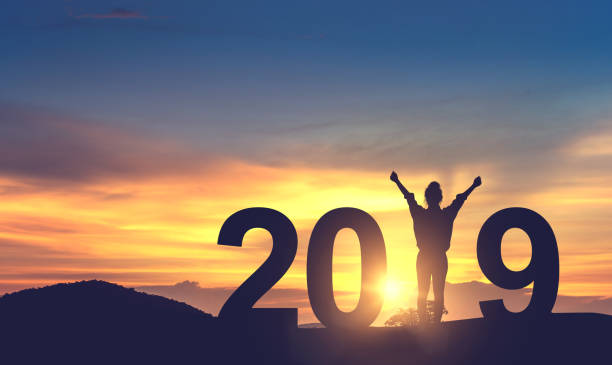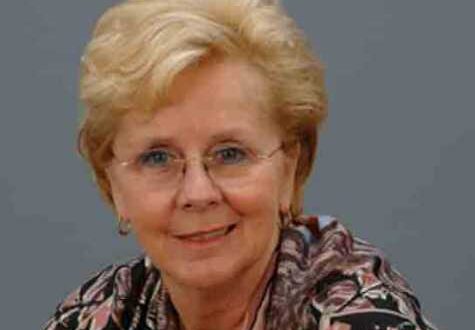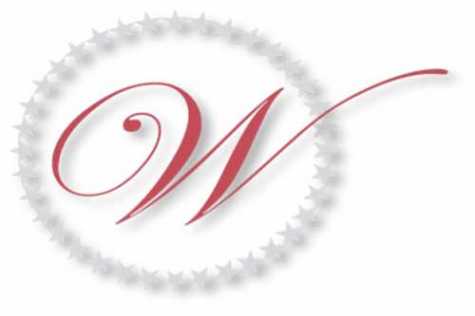2019 Collision Repair Industry: A Year in Review

As 2019 draws to a close, the world looks back on the year and reflects on all the changes that have come with the turning of a calendar.
A handful of collision repair industry leaders share their thoughts on the most impactful memories for their associations in 2019, ranging from association growth and events to future-focused enterprises, such as legislation and aiding the next generation of collision repair professionals.
Many associations report growth in membership and benefits for their members. SCRS Executive Director Aaron Schulenburg discusses the group’s continued commitment to their healthcare plan and the launch of their 401K Multiple Employer Plan. “There is a significant retirement savings shortage in America, and SCRS wants to change that in the collision repair space. We’ve put together and launched a solution that provides our small business members the opportunity to offer their employees a chance at something better. I really believe in the work we’ve done,” he states.
Schulenburg continues, “2019 has been a really interesting year with a lot of ways that SCRS served as a place to turn for information, a source of education and a voice of advocacy, but I think the year has also been earmarked by our focus on finding ways to not just improve the industry, but the lives of those who work within it. It’s exciting to work on things that will matter to people in their business, and we are happy to be leading the charge for the industry.”
CAWA established an ERISA health insurance trust this year, according to President and CEO Rodney Pierini, and Sandy Blalock, CEO of the ARA, proudly shares that ARA University, “our industry-leading online learning platform,” was converted to a full, free member benefit for direct members. “ARA leadership felt that the resources and training courses housed on the University were so valuable that every ARA member needed to have full, 24/7 access to the platform.”
Earlier this year, AASP-MA implemented a labor rate survey being run by National Auto Body Research, and according to Executive Director Lucky Papageorg, “It has substantiated something we all know – that the labor rate in Massachusetts has been artificially suppressed. It’s been a galvanizing issue for us.”
AASP-MN focused on rebranding and improving its communication strategies this year with a refreshed logo and new tagline: “Your Champion. Your Ally.” Executive Director Judell Anderson explains, “The tagline speaks to the association’s role as our members’ greatest champion, leading the way with legislative advocacy, industry promotion and management education. It also recognizes that we are a strong ally, providing proven tools to help members run their business and achieve success.”
Since Ray Fisher began serving as Executive Director of ASA at the beginning of the year, he reports, “We’ve had a significant culture change, improved our operating systems, and opened new channels of communication to our members and consumers by introducing the ASA App developed by MobileSoft and launching our new ASA Podcast. We’ve also increased our support and engagement with our Affiliates and renewed our commitment to increasing ASA’s member focus. In short, 2019 saw the growth of a new ASA learning culture that listens and tries new things to serve our members and the industry.”
For NABA, it was important to grow the association’s membership in 2019 as a way of uniting the collision repair industry in Nebraska. NABA Vice President James Rodis says, “This helps us spread important information to a greater number of shops across the state and helps to ensure that shop owners have the needed information to do a proper repair for their guests. As an owner or even a worker, it’s extremely hard to stay up-to-date on everything so NABA tries to help out as much as we can.”
IABA saw several successes this year. After standardizing the meeting agenda for all its chapters, the association experienced an increase in attendance across the state, including attendees from neighboring states. IABA President Doug Martin also indicates it was incredibly impactful to be able to bring in industry-leading trainers, such as Mark Olson of VECO Experts, Kristen Felder from Collision Hub and GM’s John Eck, thanks to sponsor support.
Association events and training opportunities in 2019 were touted by many association leaders.
AASP-NJ President Jerry McNee is happy the association saw an increase in the amount of training offers to members, and ASA North Texas President John Firm recalls the chapter’s largest meeting to-date which took place in September at Auto Zone. MSCRA most important venture of 2019 was taking over the Southeastern Automotive Repair Conference, according to Executive Director Ricki Garrett, who indicates being “very pleased” with the changes made to this year’s event.
ABAT President Burl Richards reports that the Texas Auto Body Trade Show “keeps getting bigger and better every year and provides a great opportunity for networking and training that, otherwise, attendees would not have access to without traveling out of state.”
Due to ASA Northwest’s continued success with its annual Automotive Training Expo (ATE), Jeff Lovell, president and executive director, shares, “A new ATE East program has been established in October and has over 170 attendees going through two days of training. We are looking forward to growing this new event.”
KABA also hosted a new event, its first annual trade show, which took place in April. KABA Vice President Tony Adams expresses pleasure with the attendance and shares, “As a new association, it was exciting to have such great representation from our members and collision repair industry vendors – it let us know we are on the right mission.”
AAAMS President Randy Lisk referred to the 2019 conference as “one of the best conferences in many years,” and WIN Chair Cheryl Boswell mentioned the success of “another first-class educational conference for our entire membership – with more than 225 attendees [where we recognized] four Most Influential Women who have made and continue to make a positive impact on our industry.”
WIN also “stayed true to its vision of driving the future of collision repair by providing scholarships and a mentoring program for nine women studying in vocational schools,” Boswell says.
Presenting at the St. Louis School-Business Partnership workshop early in 2019 provided WAC with an opportunity to meet a variety of school representatives and non-profit organizations, and President Shelly Jones shares, “With these connections, we have already begun to fulfill our mission on a much larger scale. In the future, there will be a very real opportunity to promote careers in the collision repair industry from within the classrooms.”
The most important thing AWAF did in 2019, according to President Susan Rokosz, was “establishing a board position focused on STEM and piloting a number of STEM outreach efforts to girls and young women. The automotive and mobility industries offer great opportunities in a wide-ranging selection of STEM fields, and we want to make sure that we fill the talent pipeline with great female candidates.”
NATA also strove to initiate conversations about the opportunity the industry holds for students who will become future repairers. According to Executive Director Cathi Webb, “NATA’s first Educational Roundtable brought together educators, industry leaders, counselors, parents and students to support existing auto tech programs in Oregon schools. Educators help each other by sharing curriculum and teaching tools, and educators and employers brainstorm ways to help, such as donating tools, equipment and vehicles, job shadowing, internships, and advisory board participation.”
WIA launched its partnership and scholarship program with Northwood University, increasing the number of scholarship programs they offer women to a total of four now. Founding Board Member Jody Devere states, “Enabling more women in the automotive industry to reach their educational and career goals is of paramount importance to our mission.”
CAWA created a scholarship program for “automotive high school teachers to assist them in keeping their programs viable – through the granting of funds, access to industry training, or the donation of automotive products and parts for use in the classroom,” Pierini explains.
Associations on both coasts put a lot of effort into their apprenticeship programs to ensure that a new generation of techs are being properly trained to repair vehicles. IGONC Executive Director Bob Pulverenti shares, “After years of work to get the North Carolina Automotive Apprentice Program in place, we have registered six apprentices. IGONC is beyond proud to see these kids thriving in shops while obtaining their automotive degree, tuition-free.”
ASA Northwest Chairman Butch Jobst is “happy to announce the iTAC apprenticeship program recently received a grant that will allow a faster roll-out of this awesome program. We are very fortunate to belong to such a connected community of automotive repair shops who support one another.”
Anderson also says that AASP-MN’s continued investment in its MNCARS initiative was huge in 2019. “The availability of a future workforce remains the most challenging issue for the industry, and the sole purpose of MNCARS is to promote careers in the automotive industry and recruit young people into the state’s college-level automotive service and collision repair programs and, ultimately, into industry workplaces.”
AASP-MN also introduced legislation to “make it an unfair claims practice for an insurer to deny payment for repair operations and procedures performed in accordance with the original vehicle manufacturer’s documented technical procedures,” Anderson shares. “While it was disappointing to have the bill pulled just hours before a scheduled hearing, we feel we’re well-positioned to advance this legislation in 2020.”
Legislative efforts were also very important for other associations in 2019. ABAC promoted efforts to save the 1963 Consent Decree which prohibits insurers from engaging in illegal and anticompetitive practices, plus they “enforced the appraiser’s code of ethics within [Connecticut] with respect to third party appraisal companies that were intentionally violating it,” President Bob Amendola says.
ABAT was also involved with important legislation this year. Richards recalls, “Some Board Members testified in front of the Insurance Committee for our Texas House Bill that we tried to pass. It was an educational experience, and we believe our experiences this year will pay dividends when we introduce our new bill in 2021.”
The collision repair industry continued to grow and advance in a variety of ways in 2019, and the experiences gained have positioned the industry’s associations to continue enhancing their membership benefits, training opportunities, efforts on behalf of the next generation, and legislative initiatives as 2020 rolls around.
Autobody News looks forward to continuing to provide all the latest association news in 2019. Happy holidays from our family to yours!


